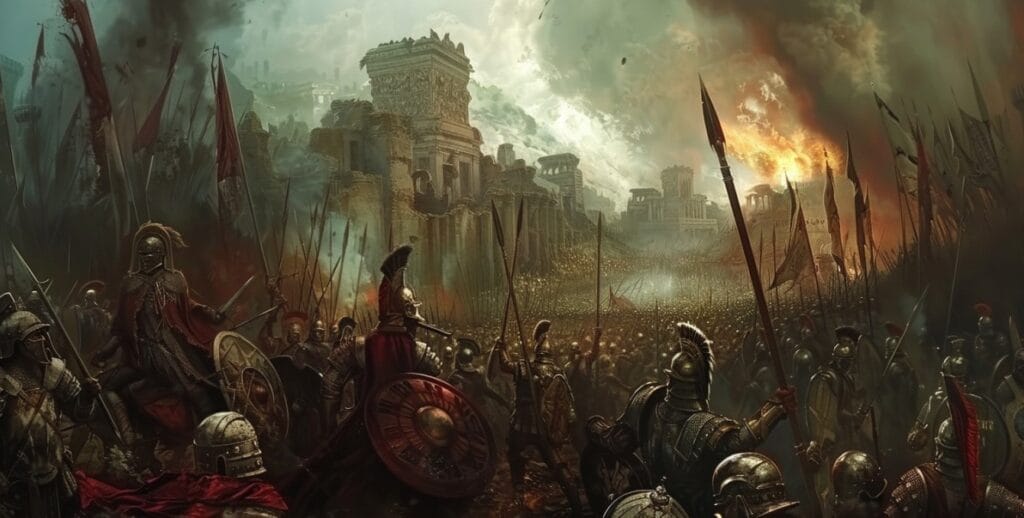
The term “Gothic War” generally refers to a period of sustained conflict between the Ostrogothic Kingdom and the Eastern Roman Empire, also known as the Byzantine Empire.
This series of wars, primarily fought in the Italian peninsula, spanned from 535 to 554 under the reign of Emperor Justinian I, and it marked a pivotal time in the late antiquity period.
The Gothic War attempted to reclaim and restore Roman territories that had been lost in previous centuries to the Goths, aiming to revive the grandeur of the Roman Empire.
One of the key figures during the Gothic War was the Byzantine general Belisarius, who is known for his strategic military campaigns that recaptured the city of Rome among other parts of Italy.
The wars resulted in significant cultural and political impacts on the region, reshaping the landscape of power in Europe.
The Gothic War’s intricate chronology and its military strategies are notable for their historical significance, influencing subsequent military tactics and political strategies across the region.
Key Takeaways
- The Gothic War was a transformative conflict centered in Italy between the Ostrogoths and the Byzantine Empire.
- Notable figures like General Belisarius played a pivotal role in the war’s progress and outcomes.
- The conflict left profound cultural, political, and military legacies that shaped Medieval Europe.
Origins of the Gothic War
In analyzing the Genesis of the Gothic War, it’s important to recognize the complex relationship between the Goths and the Roman Empire and how regional migration led to significant conflict.
The Goths and Rome
The Goths, a collection of Germanic tribes, had a long history of interaction with the Roman Empire, often alternating between conflict and cooperation.
A powerful Gothic kingdom, under King Ermanaric, stretched from the Baltic Sea to north of the Danube, significantly impacting the Roman territories. The dynamics between these two entities set the stage for what would later escalate into the Gothic Wars.
Migration and Conflict
Migration pressures, particularly the movement of the Huns into Europe, displaced many Gothic tribes, pushing them towards Roman borders.
The consequential strain heightened around the Danube, where the Goths sought refuge within the Roman Empire. The Gothic War (376-382), initially sparked by the Gothic desire for sanctuary, escalated due to cultural and resource tensions.
The Roman concessions, including the flawed disarmament of Gothic warriors, fueled the rise of warfare, drawing in various factions and reinforcing the hostilities that characterized the protracted Gothic War.
Gothic War Chronology
This section provides a timeline of the key events that shaped the course of the Gothic Wars, including decisive confrontations and significant turning points.
Early Skirmishes
The Gothic Wars initiated with a series of minor clashes between the Goths and the Roman Empire.
Most notably, the Battle of Abritus in 251 AD marked a significant early conflict where the Goths emerged victorious, resulting in the death of the Roman Emperor Decius.
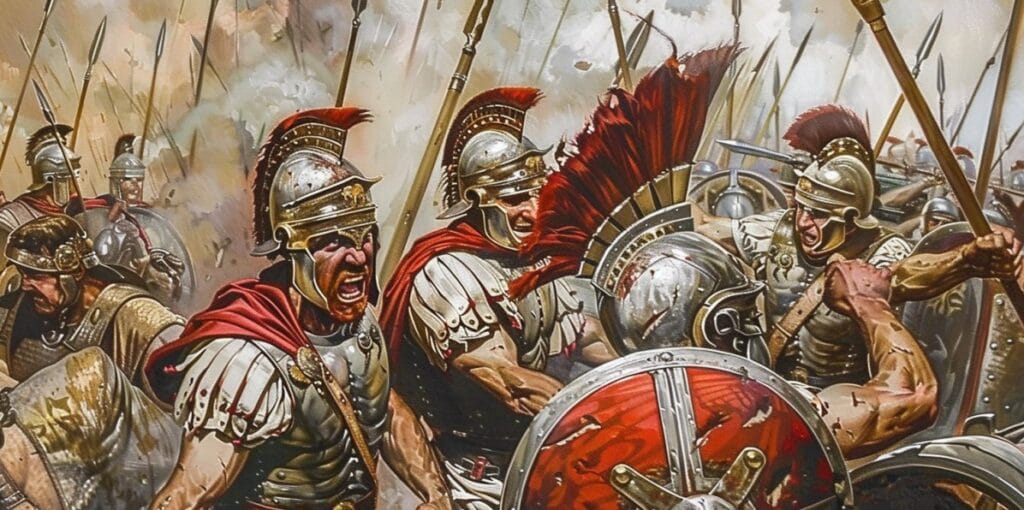
Major Battles
Over the course of the Gothic Wars, the Roman Army faced several major engagements against the Goths.
The Battle of Adrianople in 378 AD stands as one of the most catastrophic defeats for the Romans, where the Eastern Roman forces were decisively defeated by the Goths under Fritigern’s command.
Gothic Victory
Following numerous battles, the Gothic Victory came to be symbolized by the outcomes of significant conflicts like the Battle of Adrianople.
Although the Goths did not maintain their ascendancy permanently over Rome, their military successes severely weakened the Roman Empire and destabilized its control over the territories under threat.
Key Figures of the Gothic War
The Gothic War was characterized by the actions and decisions of prominent rulers and military leaders whose strategies and desires swayed the course of history in late antiquity.
Emperors and Kings
Emperor Justinian I led the Eastern Roman Empire through a significant phase of expansion, with the ambition to reclaim Roman territories lost to the Goths.
His series of military campaigns aimed to recapture the Italian peninsula were a hallmark of the Gothic War.
The Ostrogothic resistance was rallied by several kings, notable among them Theodoric the Great, who initially established Ostrogothic rule in Italy, as well as his successors including the warrior king Totila.
Their leadership was instrumental in the prolonged Gothic struggle against Roman advancement.
Alaric I, the King of the Visigoths, is renowned for his sack of Rome in 410, showcasing the barbarian threat to Roman supremacy.
After the fall of the Western Roman Empire, Odoacer, a Germanic king, took power but was later deposed by Theodoric, reinforcing the shifting power dynamics in the region.
The Visigoths, initially allies to the Romans, had their own confrontations under leaders like Fritigern and Athanaric, who faced off against the Roman Emperor Valens, leading to the crucial Battle of Adrianople in 378.
Generals and Leaders
The military strategies articulated in the Gothic War were shaped by both Roman and barbarian leaders.
Belisarius and Narses were two of Justinian’s generals noted for their tactics and victories.
Belisarius is renowned for his reconquest of large parts of the Western Roman Empire and his exploits in the siege of Rome, while Narses is credited with the decisive victory during the Battle of Taginae that ultimately led to Totila’s death.
On the side of the Ostrogoths, Totila, as a military commander, proved his prowess until his eventual downfall and death in 552.
His tenacious resistance extended the war’s duration and devastated the Italian Peninsula.
Procopius, a Byzantine scholar, documented this period extensively, providing insight into the lives of these influential figures and the Gothic War itself.
His works are a significant historical source for understanding the tactics, battles, and political maneuvers of the time.
Cultural and Political Impacts
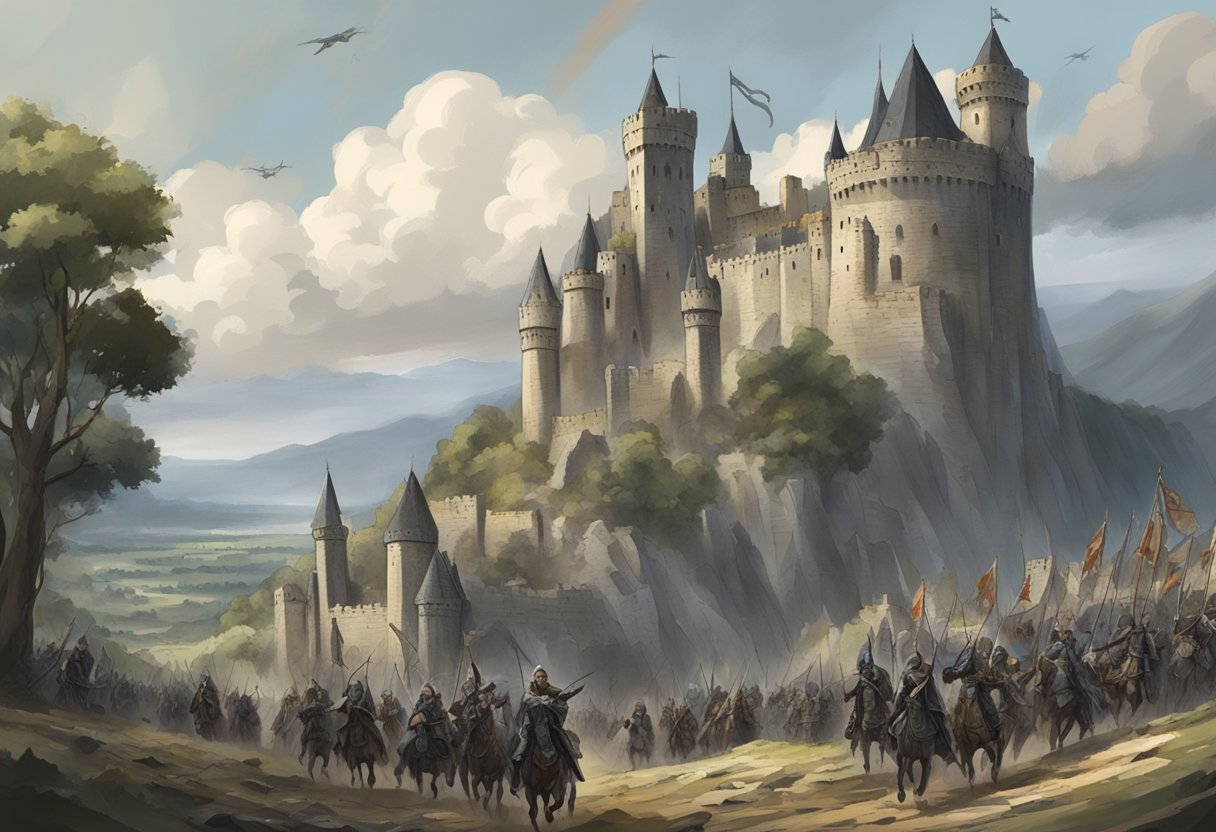
The Gothic Wars profoundly reshaped the geopolitical and cultural landscape of Europe, particularly affecting the territories and the societies of the Italian Peninsula and the wider Roman world.
Territorial Changes
The cessation of the Ostrogothic Kingdom marked a significant territorial reorganization.
The Eastern Roman Empire, also known as the Byzantine Empire, under Justinian’s rule, recaptured large swathes of land, including pivotal regions such as Italy, Sicily, Sardinia, and parts of Dalmatia.
Ravenna, once the capital of the Ostrogothic Kingdom, was reclaimed, serving as a Byzantine exarchate and representing imperial authority in Italy.
Despite these gains, territories like Corsica and areas previously held by the Vandals and Alamanni remained under varied control, punctuating the complex mosaic of territorial dominion in post-war Europe.
Sociopolitical Repercussions
The Gothic Wars ushered in significant sociopolitical shifts.
In Italy, the war’s conclusion did not bring immediate peace but rather a transition from Ostrogothic to Byzantine governance, which was marked by ongoing military tensions and resistance from Gothic and native populations.
The Province of Africa also felt the reverberations, as the loss of lands to the Vandals and their eventual reconquest transformed local politics and society.
Within this cauldron of change, the Italian Peninsula saw the seed of Gothic Revival years later, a cultural movement longing for the return of Gothic customs and styles amidst Byzantine rule.
The shifting of power bases, especially from the Western Roman Empire to Byzantine hands and the aftermath impact on regional governance in cities like Constantinople and across the Italian landscape, defined an era of transformation that bridged the ancient world with the medieval.
Military Strategies and Tactics
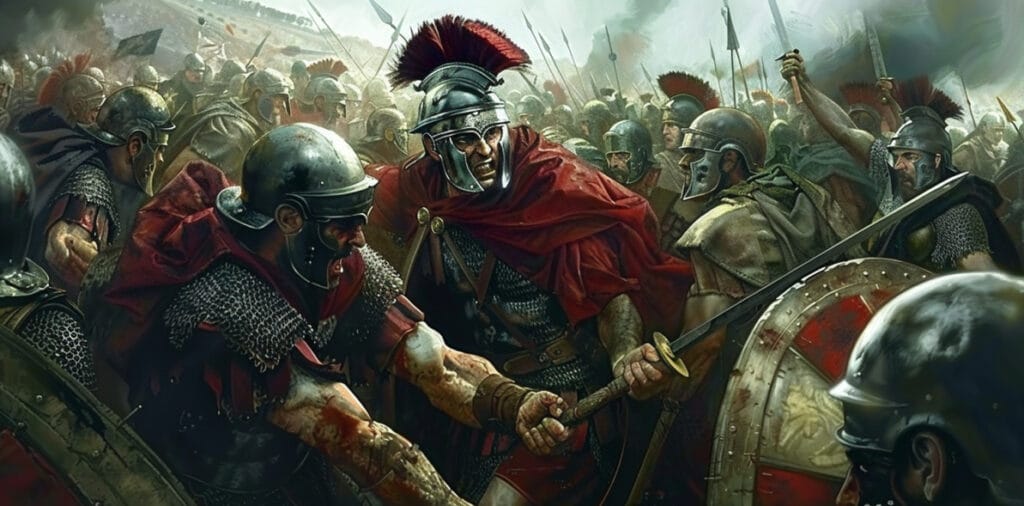
The Gothic War showcased a clash where military ingenuity and the evolution of tactics were pivotal in determining the victor.
This section examines the strategic military reforms that took place, narrates the notable battle encounters, and describes the weapons and equipment utilized during the conflict.
Military Reforms
Under the leadership of the Byzantine general Narses and magister militum Belisarius, the Roman armies underwent significant military reforms.
They emphasized strict discipline and incorporated units of foederati, allies who provided a valuable supplement to their forces.
Additionally, strategic utilization of mercenaries provided expertise in various forms of combat.
Notable Engagements
Throughout the Warfare, specific battles exemplified the strategic and tactical brilliance of Byzantine commanders.
Notable among these is the Battle of Taginae, where Belisarius outmaneuvered the Ostrogoths using superior tactics and discipline.
Similarly, the decisive Battle of Busta Gallorum highlighted Narses‘ adept use of terrain and troop positioning in achieving a remarkable victory against the Goths.
Weapons and Equipment
| Weapon Type | Description | Used By |
|---|---|---|
| Sword | The primary hand-to-hand combat weapon, often a short stabbing type. | Infantry |
| Ax | Used for close combat and could be thrown as well. | Infantry, Cavalry |
| Javelins | Light and designed for throwing, these were the precursor to more advanced projectile weapons. | Infantry, Skirmishers |
| Bow | The ranged weapon of choice for engaging the enemy from a distance. | Archers |
Roman and Byzantine armies utilized a broad array of equipment, ranging from protective gear like shields and armor to offensive weapons like swords and javelins.
Notably, the Roman army’s adaptability in employing both conventional and non-conventional arms played a crucial role in combat.
The ax was a versatile tool, not only used in conflict but for practical purposes as well.
Aftermath and Historical Significance
The conclusion of the Gothic War (535–554) significantly weakened the Byzantine Empire, both economically and militarily, which had lasting repercussions for the region.
The war exhausted the empire’s resources, leaving territories vulnerable to future incursions and reducing its ability to project power subsequently.
During the Migration Period, the balance of power shifted as various Germanic tribes, including the Goths, played pivotal roles in the eventual dissolution of the Western Roman Empire.
The Gothic Wars underscored this transition by highlighting the resilience and military might of the Gothic tribes against Rome’s legions.
The Gothic War also contributed to a restructuring of the political landscape in the ancient world.
The Goths eventually established their own rule in parts of the Italian peninsula, shaping the regional politics for centuries thereafter.
The numerous battles, which included the fateful Battle of Adrianople, demonstrated the capabilities of Gothic leadership and the limitations of Roman military strategy during the third century.
Historical records from this era, including accounts of Rome’s Gothic Wars, provide valuable insights into the military tactics, societal changes, and the broader migration patterns of the time.
These records are key to understanding the complexities of relations between empires and migrating peoples in the ancient world.
This period is marked by the dramatic shifts in power from the Roman to the Germanic-controlled territories, and these shifts had widespread implications for the development of Europe’s political and cultural landscape that echo into the modern era.
Cultural Legacy and Historiography
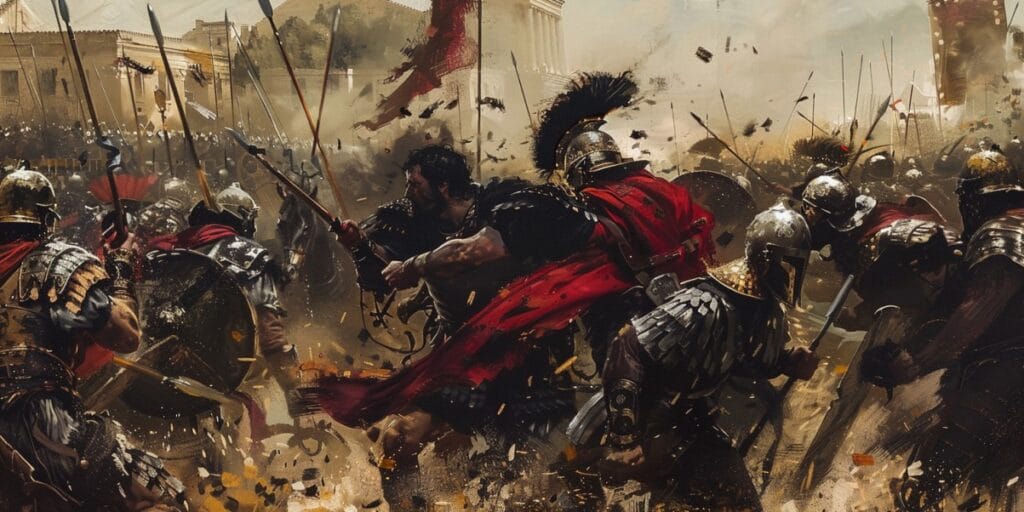
The cultural legacy of the Gothic in correlation with war is a multifaceted terrain, where academic approaches dissect its historical nuances and literary expressions.
Literary and Academic Perspectives
Gothic literature is often found entwined with the narratives of war, echoing the trauma and the specters of conflicts past and present.
The war Gothic notably becomes a vehicle for representing not only the visceral horrors of combat but also the psychological shadows cast over society.
Studies emerging from esteemed institutions like Yale University engage with the historical dimension of the Gothic, analyzing how its revival in various periods correlates with societal anxiety and war.
Historiographic elucidation is fundamental in discerning the Gothic legacy, particularly by scholars assessing the works of Procopius of Caesarea, known for detailing the Gothic Wars.
These texts are critical in understanding how the brutality of war influenced Gothic expression in art and architecture, which, during the Gothic Revival period, synthesized past and present cultural dynamics.
Interactions between Gothic fiction and warfare also reveal changes in societal attitudes towards Christianity and morality.
The Gothic’s frequent portrayal of the supernatural and the occult contrasts sharply with Christian ideals, and this tension is amplified in the context of war symbolism and narrative.
The transmutation of the Gothic across disciplines emphasizes that its reach extends beyond mere aesthetic; it is an enduring discourse methodically untangling the knots of historical, cultural, and ethical quandaries engendered by warfare.
Gothic War in Modern Media
The longstanding cultural impact of the Gothic War is evident in its persistent presence within modern media, extending from art and literature to various contemporary narrative forms.
Depiction in Art and Literature
The Gothic War has carved its place within art and literature, segueing from historical accounts into a myriad of creative interpretations.
In literature, one observes a reimagining of the conflict and its themes within genres that appreciate the depth of its historical essence.
Articles like Gothic: New Directions in Media and Popular Culture discuss the Gothic mode’s evolution and its integration into modern tales, while alluding to the broad resonance the Gothic War has had on cultural narratives.
The intricate dynamics of the war offer a rich tapestry of drama and political intrigue that continues to inspire writers and artists alike.
Influence on Modern Narratives
Modern narratives frequently incorporate elements from the Gothic War, underscoring their lasting cultural impact.
Its themes are often seen reflected in works that explore darker aspects of humanity and society, with some even subtly echoing the epochs of historical conflict it embodies.
As outlined in the text Gothic War on Terror, contemporary American literature and media leverage the Gothic to articulate the ongoing effects of trauma, drawing parallels between the ancient war’s psychological landscape and modern societal challenges.
Through this lens, the Gothic War’s narrative framework serves as a template for exploring current issues, with its influence permeating a wide range of modern cultural artifacts.
Frequently Asked Questions
The following questions address common inquiries about the intricate history of the Gothic Wars, shedding light on their causes, key events, outcomes, and lasting impacts on military strategies.
What were the primary causes of the Gothic Wars?
The Gothic Wars were primarily sparked by the desire for territory and power.
External pressures such as Huns invading Gothic lands forced the Goths to move into Roman territories, which led to conflicts driven by the struggle for resources and political control.
Can you provide a timeline for the Gothic Wars?
The Gothic Wars spanned various periods, with significant conflicts from 376-382 and 535-554.
For detailed timelines, historical records on sites like Loeb Classics provide comprehensive insights into the events.
What was the outcome of the Gothic Wars, and who emerged victorious?
The outcomes of the Gothic Wars varied.
The early war of 376-382 ended with the Goths settled in the Roman Empire as foederati. The later conflict, known as the Gothic War of 535-554, resulted in a Roman victory but severely destabilized the region and depleted the Empire’s resources.
How did the tactics and strategies of the Goths influence the conflicts?
Gothic tactics and strategies, such as their effective use of cavalry and coordination of large-scale movements, had a significant impact on the conflicts.
They adapted to Roman military strategies and often used their mobility to their advantage.
How many casualties were reported in the Gothic Wars?
Accurate casualty numbers from the Gothic Wars are not specified in historical records.
However, it is widely acknowledged that the wars were devastating, with high death tolls on both sides due to battles, sieges, and the aftermath of conflict.
How many distinct conflicts are collectively referred to as the Gothic Wars?
There were multiple conflicts collectively known as the Gothic Wars. The term often refers to the war of 376-382, the war of 535-554, and sometimes to conflicts involving the Goths and Romans before these dates.
For a broader overview, the Wikipedia page can provide additional context.
